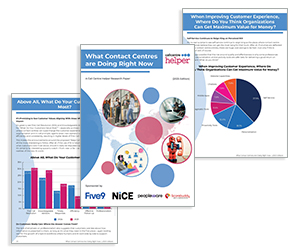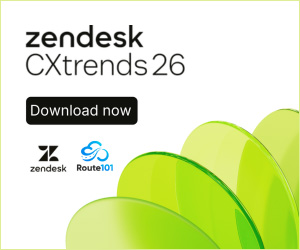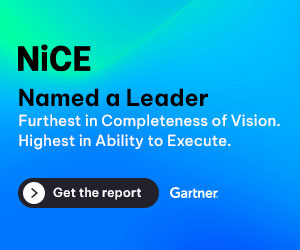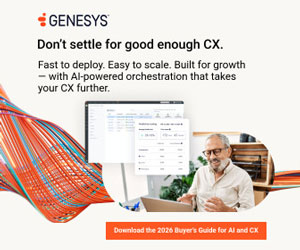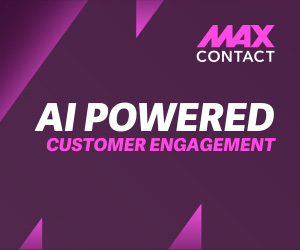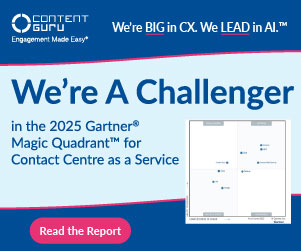This blog summarises the key points from a recent article from David McGeough at Scorebuddy, where he walks you through the process of finding an enterprise call centre solution that fits your needs – from key features to how to pick a vendor and what you need to avoid.
Enterprise call centres operate on a much larger scale than smaller contact centres, handling high volumes of interactions across multiple channels and often serving a global customer base.
As a result, the software they use must meet more stringent demands, including enhanced security, robust compliance features, and the flexibility to support their complex operations.
What Sets Enterprise Call Centres Apart
Enterprise contact centres operate on a much broader and more complex scale than traditional call centres. They manage significantly higher volumes of interactions while handling more nuanced customer needs and inquiries, all within a fast-paced, omnichannel environment.
Key characteristics of enterprise-level contact centres include:
- Handling large-scale, high-volume communications
- Operating 24/7 across multiple channels (phone, chat, email, social, etc.)
- Adhering to complex compliance requirements in various global markets
- Running sophisticated technology stacks
- Supporting multiple teams or tenants within a centralized platform
- Utilizing advanced workforce and performance management tools
- Leveraging in-depth analytics and customizable reports
- Maintaining enterprise-grade security to combat data breaches and fraud
Exploring Enterprise Contact Centre Software Options
Before choosing a platform, it’s essential to understand the main types of enterprise contact centre solutions:
- Cloud-Based: Hosted off-site by the provider, cloud solutions offer flexibility, quick scalability, and minimal in-house maintenance—ideal for remote or distributed teams.
- On-Premises: Installed within your organization’s infrastructure, on-prem solutions allow total control over customization and data, but often involve higher maintenance and upfront costs.
- Hybrid Models: A blend of cloud and on-site systems, offering gradual cloud adoption while maintaining critical local capabilities.
- CCaaS (Contact Center as a Service): Subscription-based, fully cloud-native platforms built to scale with global teams and integrate with AI and omnichannel support.
12 Must-Have Features in an Enterprise Contact Centre Platform
When evaluating enterprise contact centre platforms, it’s important to identify the capabilities that support scale, compliance, and seamless customer experiences. Here, we explore 12 must-have features to help guide your selection.
1. Security and Regulatory Compliance
Given the sensitive data processed daily, enterprise platforms must ensure top-tier security and comply with global regulations like GDPR, HIPAA, and PCI DSS. Key features should include:
- End-to-end data encryption to protect information in transit and at rest.
- Multi-factor authentication to prevent unauthorized access.
- Geographic data hosting options for regional data sovereignty.
- Compliance certifications such as SOC 2 or ISO/IEC 27001 to demonstrate adherence to industry best practices.
2. Resilient Global Infrastructure
Enterprise contact centres often support customers across multiple time zones and regions, making downtime unacceptable.
A resilient global infrastructure is crucial to maintaining consistent service quality, no matter where agents or customers are located. To achieve this, platforms must be built with high availability, geographic redundancy, and real-time recovery in mind.
Key capabilities include:
- Multi-region failover systems
- Low-latency voice routing
- 24/7 availability through a “follow-the-sun” support model
3. Smart Routing and Call Queuing
By intelligently directing inquiries based on context and customer needs, contact centres can reduce wait times, minimize call transfers, and improve first-contact resolution.
Modern platforms use AI to optimize routing logic in real time, ensuring every interaction is handled by the most suitable agent.
Routing should be based on:
- Contextual data
- Language and regional preferences
- Agent expertise
- Sentiment and intent analysis powered by AI
4. Scalable and Multi-Tenant Capabilities
Enterprise contact centres often support a variety of business units, brands, or geographic regions – all with unique requirements.
A scalable, multi-tenant architecture allows organizations to manage these diverse needs within a single, unified platform. This ensures operational efficiency while enabling each department or brand to maintain its own workflows and identity.
Scalable architectures enable:
- Centralized administration
- Independent workflows per tenant
- Streamlined updates and governance
5. AI and Automation Integration
AI and automation are revolutionizing enterprise contact centres by streamlining operations and improving customer service.
These tools handle repetitive tasks, freeing up agents to focus on more complex issues. They also improve decision-making and enable continuous performance monitoring.
Modern platforms leverage AI for:
- Chatbots and self-service support
- RPA for call logging and follow-ups
- Real-time agent assistance
- Automated QA for conversation reviews
6. Omnichannel Communication
Omnichannel communication ensures that customers receive consistent support, no matter the platform they use.
By allowing seamless transitions between channels, contact centres can provide a smoother experience and reduce customer frustration. Agents benefit from a unified interface, making it easier to manage interactions across multiple touchpoints.
Support for seamless transitions between channels like:
- Voice
- SMS
- Live chat
- Social platforms
7. Real-Time and Historical Analytics
Real-time analytics are essential for monitoring contact centre performance and responding quickly to issues. Dashboards provide visibility into active calls, agent status, and queue performance, helping supervisors stay on top of operations.
Historical analytics offer deeper insights for strategic decision-making and can be integrated with business intelligence tools for even more detailed reporting.
Real-time dashboards help monitor:
- Active calls
- Agent status
- Queue performance
8. Workforce Engagement Management (WEM)
Workforce Engagement Management (WEM) is key to enhancing agent performance and satisfaction. By focusing on regular feedback, recognition, and skill development, contact centres can foster a more engaged workforce. These efforts lead to improved customer satisfaction and higher retention rates.
Boost agent morale and performance through:
- Feedback systems
- Recognition programs
- Skill development tools
- Integrated learning management systems
9. Comprehensive Quality Assurance
By utilizing customizable scoring and AI-driven tools, contact centres can identify areas for improvement and provide targeted coaching. Comprehensive reporting helps track progress and ensures consistent, high-quality interactions.
Effective QA strategies enhance both CX and employee development. Look for:
- Custom scoring templates
- AI-based interaction scoring
- Keyword tracking via transcription
- Reporting for targeted training
10. Seamless Integrations and Open APIs
To ensure smooth operations, contact centre platforms need to integrate easily with other business tools. Seamless integrations prevent siloed data and workflows, making it easier to manage customer interactions and performance across systems.
Open APIs allow for flexibility, enabling businesses to connect their platform with a variety of applications.
To avoid siloed systems, your contact centre platform should easily connect with:
- CRM solutions
- WFM software
- Analytics platforms
- Customer engagement tools
11. Customization and Workflow Flexibility
Customizability is key to ensuring the contact centre platform meets your unique business needs.
A flexible solution allows you to adjust dashboards, workflows, and reporting formats based on your team’s specific requirements. This adaptability ensures seamless support across different regions, teams, and languages.
- Dashboards
- Role-based access
- Reporting formats
- Workflow automations
12. Agent-Centric Experience
Providing agents with the right tools and resources is crucial for delivering exceptional service. A platform that offers script assistance, knowledge bases, and gamification can help improve agent productivity and morale.
Additionally, cloud-based access ensures agents can work effectively whether in the office or remotely.
Empower agents with tools like:
- Script assistance and knowledge bases
- Predictive diallers and ACD systems
- Gamification features
- Cloud-based access for hybrid workforces
How to Choose the Right Enterprise Contact Centre Solution
Assess Internal Needs
To choose the right contact centre solution, start by gathering requirements from various departments, teams, and geographies.
This process will help you understand specific pain points, desired features, and any unique needs across your organization.
Create a Vendor Scorecard
To objectively evaluate potential contact centre solutions, create a vendor scorecard that includes key metrics such as integration potential, vendor roadmap, support quality, and total cost of ownership (TCO).
By assigning weighted values to each criterion, you can compare the platforms based on what matters most to your organization, ensuring that the chosen solution aligns with both short-term needs and long-term goals.
Shortlist and Evaluate
After creating your vendor scorecard, narrow down your options to those that meet both your technical requirements and strategic objectives.
This focused list will help you conduct a deeper evaluation of each platform, assessing factors such as ease of use, customization options, and long-term scalability. A well-chosen shortlist ensures that you spend time thoroughly vetting only the most promising solutions.
Pilot the Platform
Before committing to a full rollout, conduct a pilot program to test the platform in a real-world setting. This allows you to assess its usability, the quality of vendor support, and how well it fits with your agents’ workflows.
By gathering feedback from users during the pilot phase, you can identify potential issues and make necessary adjustments before a wider implementation.
Prepare for Rollout
A successful implementation requires a well-structured onboarding and change management strategy. Start with a phased rollout, allowing teams to adjust to the new system gradually while providing continuous support and training.
This approach ensures smoother adoption, minimizes disruptions, and allows for ongoing improvements as the platform scales across your organization.
Budget Considerations: What Affects the True Cost?
Beyond sticker price, account for:
- Usage-based or seat-based pricing
- Cost of scaling
- Setup and implementation fees
- Tiered support options
- Total cost of ownership (TCO)
- Time to ROI
Evaluate hidden costs, and aim for transparency in your budget planning to avoid future surprises.
This blog post has been re-published by kind permission of Scorebuddy – View the Original Article
For more information about Scorebuddy - visit the Scorebuddy Website
Call Centre Helper is not responsible for the content of these guest blog posts. The opinions expressed in this article are those of the author, and do not necessarily reflect those of Call Centre Helper.
Author: Scorebuddy
Reviewed by: Rachael Trickey
Published On: 2nd May 2025 - Last modified: 7th May 2025
Read more about - Guest Blogs, David McGeough, Scorebuddy






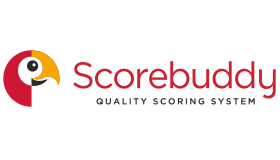 Scorebuddy is quality assurance solution for scoring customer service calls, emails and web chat. It is a dedicated, stand-alone staff scoring system based in the cloud, requiring no integration.
Scorebuddy is quality assurance solution for scoring customer service calls, emails and web chat. It is a dedicated, stand-alone staff scoring system based in the cloud, requiring no integration. 




